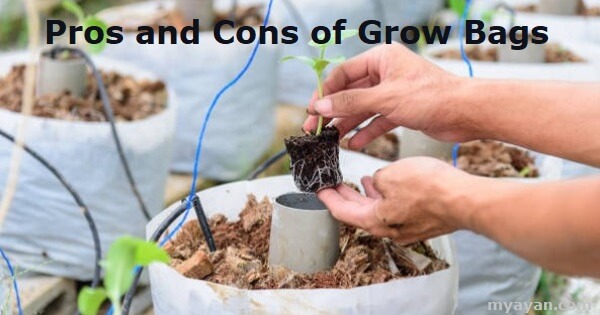Did you know you can have a vegetable garden in just a few small grow bags? Grow bags are convenient for growing your favorite veggies like tomatoes, peppers, and herbs. Suitable for limited space, they are also an environmentally friendly way to grow plants. But before you jump in and start planting, it’s important to understand the pros and cons of grow bags before choosing them for your little space.
Grow bags are perfect containers to grow tomatoes, cucumbers, peppers, eggplants, zucchini, squash, melons, and lettuce in small grow bags. To your surprise, herbs like basil and oregano also do well in grow bags. Given enough space, root crops like carrots, radishes, and beets can also be grown in grow bags. If you are fascinated to make your space a little more colorful, you can try flowers.
Ever wondered why growing plants in a bag is better than plastic or terracotta pots? Consider the following advantages of grow bags to start over:
One of the greatest advantages of using grow bags is portability. They can be moved around easily in order to take advantage of the best light sources or for changing weather conditions. Even if you switch your residence, you can carry them along and settle them into your new humble abode. This portability factor is one of the prominent advantages of grow bags for frequent travelers.
Grow bags can be purchased relatively cheaply compared to other types of gardening systems, such as raised beds or containers. This means that even if you're on a tight budget, you can still start your own vegetable garden.
Grow bags are very easy to use and require minimal setup time. This makes them a great choice for beginner gardeners who want to get started immediately without learning complicated gardening techniques.
Grow bags are a great solution for those with limited space in their yards or balconies. They take up very little space, allowing you to have a larger garden without taking over the entire area.
The built-in drainage system of most grow bags ensures that plants get the right amount of water and air. This prevents root rot and helps to keep your plants healthy and happy.
Though the advantages of grow bags are numerous, there are some potential drawbacks. Here are a few cons of grow bags for you to consider.
Grow bags can retain heat more than other gardening methods, which can be bad for certain plants. They should not be used in hot climates or summertime unless proper shade and ventilation are provided.
Grow bags have limited root space compared to raised beds or traditional gardens, so plants may not reach their full growth potential. This could lead to lower yields, especially with larger vegetables like tomatoes or peppers.
Grow bags are susceptible to damage from animals, pests, and extreme weather conditions. Grow bags are susceptible to damage due to their lightweight nature and environmental factors. UV rays can cause the plastic material of the bag to weaken over time, leading to holes in the bag or other types of degradation. When using grow bags, you should place them in areas that provide adequate protection from direct sunlight and other heat sources.
Grow bags come in a variety of sizes, but they are generally limited to a certain size and shape. This can make it difficult to plant larger varieties such as tomatoes or squash, so consider these plants carefully before investing in grow bags.
Since the grow bags are smaller than traditional gardens, they may not be able to contain enough nutrients for some plants. Adding additional fertilizer every few weeks or months may be necessary, depending on what you're growing.
While some grow bag models can be reused from year to year, most cannot due to wear and tear or potential damage from pests or animals. If you plan on using your grow bags for multiple seasons, be sure to invest in ones that are made with more durable materials.
Conclusion
There are many advantages of grow bags for gardeners of all levels of experience, but you must also consider the pros and cons before placing them in your garden or rooftop. It’s wide to understand the benefits and drawbacks associated with using grow bags depending on your gardening needs. With a little bit of research and planning, you can set up a successful and productive garden with the help of grow bags.

Grow bags are porous, so water drains out quickly. As a result, you will need to water them more often than plastic pots. If you're not great at remembering to water your plants, grow bags might not be the best choice for you.
Plants kept in bags do not get root-bound like the ones in hard pots. Also, aeration enables water to drain out from both the sides and the bottom of the container. This ensures that gardeners who overwater their plants do not cause root rot.
According to some growers, plants grown in grow bags thrive better than those in plastic pots due to the temperature difference. The soil in grow bags stays cooler in the summer because the bags are breathable, allowing heat to escape. On the other hand, plastic pots tend to heat up in the sun.
There is no specific age limit for using a blanket. The transition is not difficult, but it may take some time for someone to learn how to keep their blanket on.